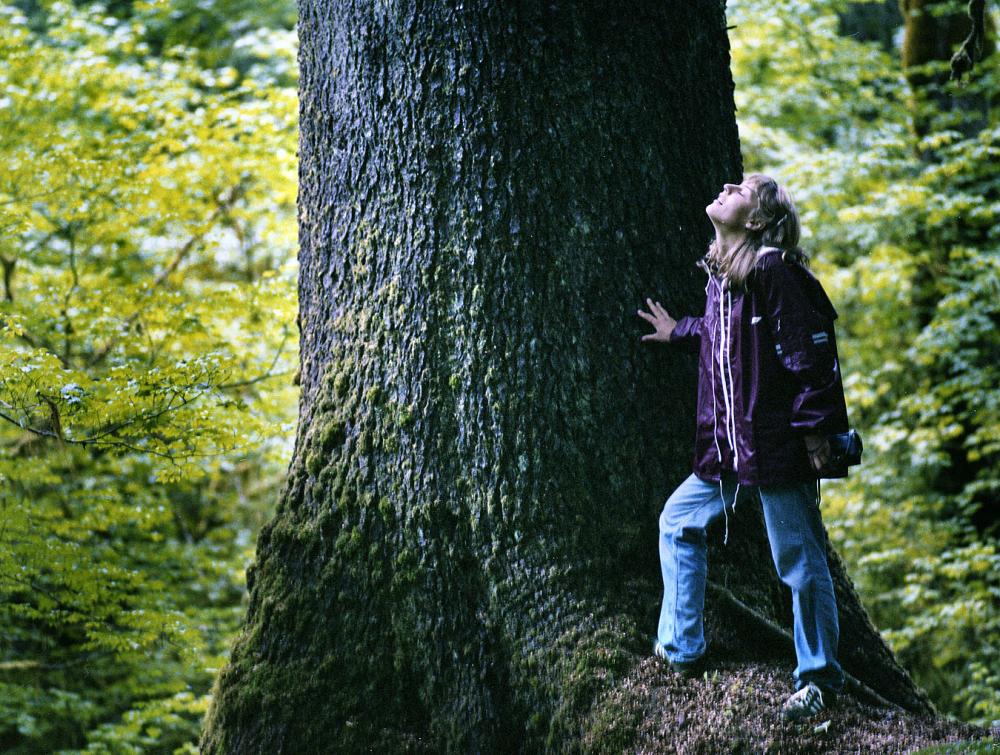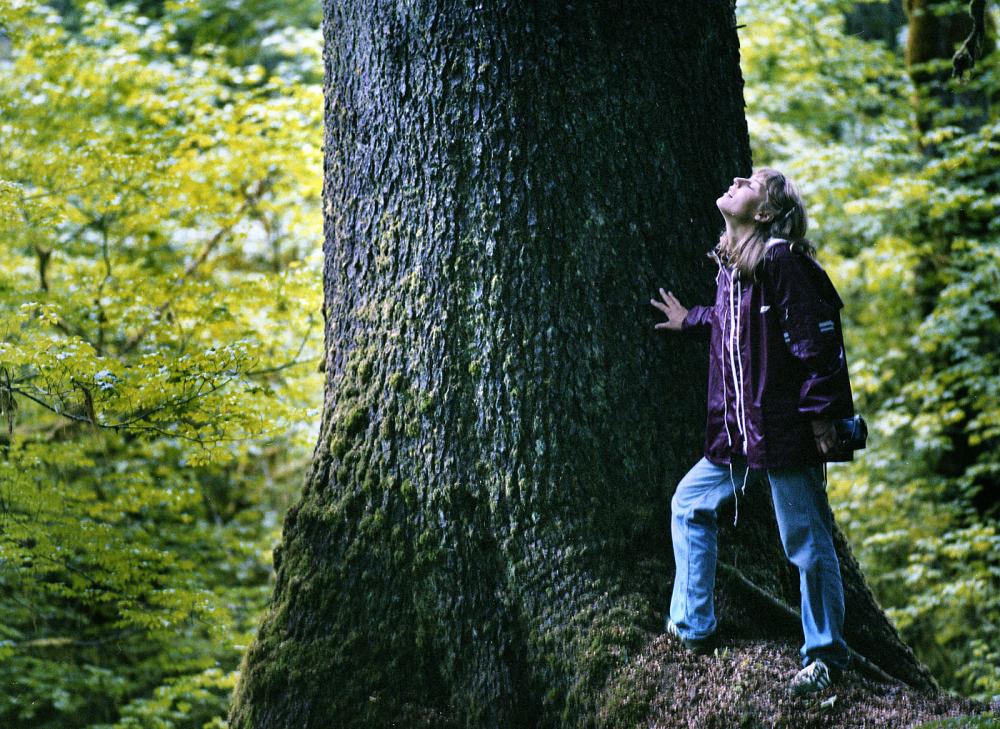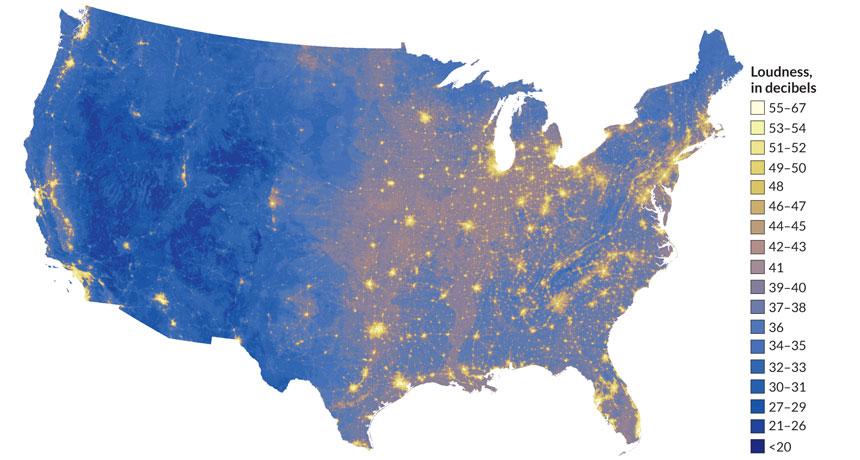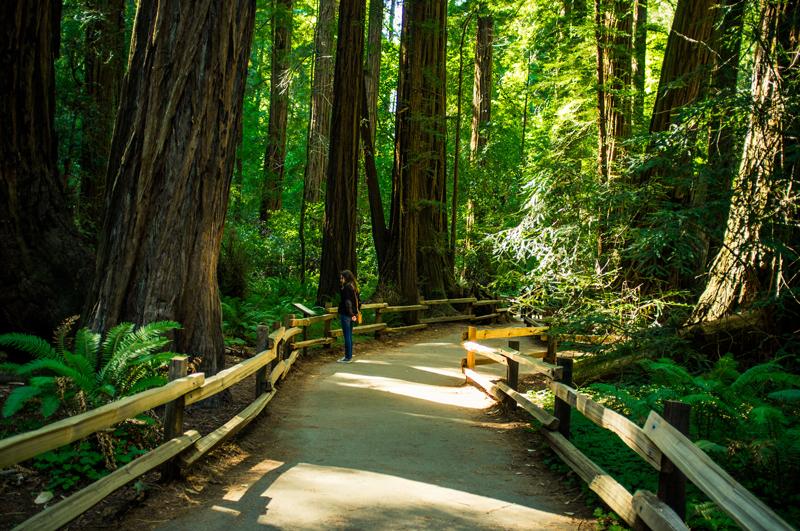National parks and wildlands are the place for peace & quiet

Woman in Hot Rain Forest in Olympic National Park, Washington
Lars Lundqvist, Flickr

Woman in Hot Rain Forest in Olympic National Park, Washington
Lars Lundqvist, Flickr
Certain parks have a level of background noise comparable to what may have been present before European colonization
A new map of the U.S. based on 1.5 million hours of acoustic data lends scientific credibility to what many nature-lovers treat as an article of faith. Namely, to find some peace and quiet, you need to get away from big cities and head west.
The map was unveiled at the annual American Association for the Advancement of Science (AAAS) conference by a group of scientists that included Kurt Fristrup, a National Park Service (NPS) sound expert. It shows that with a few exceptions, silence-seekers must venture to the interior Southwest, western Great Plains and Northwest—especially big national parks and other protected areas where intrusive development has been kept to a minimum.
According to the journal Science, which is published by the AAAS, Yellowstone National Park and Colorado’s Great Sand Dunes National Park were identified as being among the quietest places in the country, with a level of “background noise”—about 20 decibels—comparable to what may have been present before European colonization. Most cities average 50-60 decibels, with the streets of Manhattan charting around 70. In the bustling Egyptian capital of Cairo, average noise is around 85 decibels, “like living [...] with a lawn mower running next to your head.”
See the map below (yellow areas indicate higher decibel readings):

The NPS is planning on using the new data to study where manmade noise is affecting wildlife most.
Wild silence is a valuable commodity
Hoh Rain Forest, in the northwest portion of Washington’s Olympic National Park, drew media attention in January as potentially “the quietest place in the U.S.” Gordon Hempton, an “acoustic ecologist,” founded the nonprofit “One Square Inch of Silence” in 2005 to prevent noise pollution from intruding on that precious sanctuary. The fact that his decade-long effort has been so precisely-focused underscores both the scarcity of truly quiet spots—or spots where background noise is almost entirely natural—and their great value.
Unsurprisingly, preserving places where one can experience ambient nature sounds without interference has been identified as one of Americans’ most important reasons for protecting national parks, and visitors to these treasured places consider noise from aircraft and other sources to be highly disruptive to their experience. Beyond its ability to spoil an afternoon hike, research suggests that background noise can also raise stress levels, aggravate certain medical conditions and even negatively affect one’s memory.

Muir Woods National Monument (California).
Credit: Héctor García, flickr.
But while national parks and other protected areas can provide an invaluable refuge from the loud chaos of everyday life, this quality is not necessarily inexhaustible. Fristrup told NBC News that both noise and light pollution are growing fast, disrupting quiet pockets, affecting animals and threatening to dull future (human) generations’ ability to appreciate silence or near-silence in the outdoors.
In some places, the effect of all this background noise is akin to the way fog impedes vision. Research conducted at California’s Muir Woods National Monument in 2007 found that the patch of old-growth redwood forest about 12 miles from San Francisco is beset by noise from “everything from air tours to maintenance equipment,” annoying many visitors. Parks from coast to coast have specifically grappled with the problem of noisy air traffic for years. Put simply, the outdoors are getting noisier.
Turning down the volume
With simple non-gadget-interrupted solitude becoming a rare indulgence, NPS and other land management officials are working on a range of ways to mitigate sound pollution. Fortunately, noise reduction plans can pay dividends quickly, unlike the laborious, patient approach required to clean up a thoroughly polluted river or lake, for example. On an individual basis, park visitors can take steps like turning off their cell phones. One indirect approach to combating noise pollution on public lands is helping more Americans from urban and suburban areas see—well, hear—what they’ve been missing, in the hopes that park visitors become quieter and more conscientious—with a stronger connection to wildlands.
Public lands conservation is another vital tool. By advocating for treasured landscapes to be protected as parks, monuments or federal wilderness areas, we can limit development, motorized recreation and other activities that make a racket in wildlands and ensure that they stay as wild and peaceful as possible for future generations.
